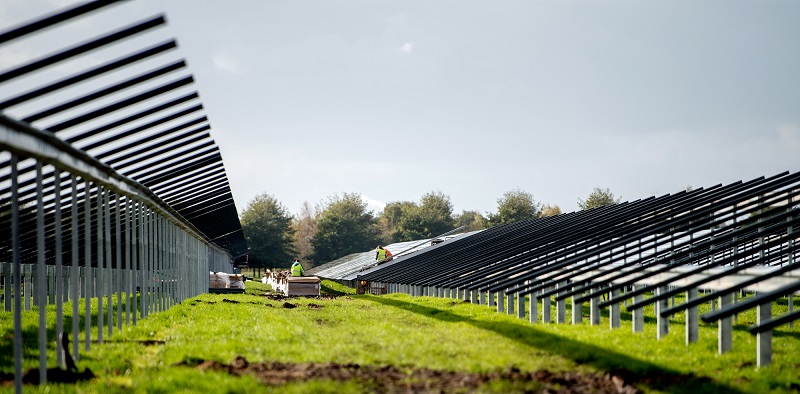The Netherlands is likely to have become the latest European nation to become a gigawatt-scale annual solar market, based on expectations for 2018 figures.
According to estimates provided to pv magazine by Peter Segaar – Dutch solar analyst and owner of the polderpv.nl website – some 1.3-1.5 GW of PV installations were connected to the grid last year.
If confirmed by the Dutch Central Bureau of Statistics – which recently announced a new methodology to improve the way it collects data on solar development – the numbers would compare to growth of around 768 MW in 2017, 609 MW in 2016, and 519 MW in 2015.
According to Mr. Segaar, last year’s growth was due to two main drivers: the SDE+ subsidy-driven project market took off, with at least 794 MW of new additions in 2018 according to preliminary data from CertiQ, the Dutch public entity issuing guarantees of origin; and the uninterrupted growth of residential solar. He also revealed that the largest Dutch grid operator – Alliander – had already reported 441 MW of new growth by October. “This is, for the Ducth solar market, twice the yearly growth volume of 2017,” Mr. Segaar said.
The Dutch Minister of Economic Affairs and Climate Change, Eric Wiebes, told parliament in a letter late last year the SDE+ budget – for solar and renewable energy projects above 15 kW in size – has been reduced from €12 billion to €10 billion this year.
Netherlands expected to have reached 4 GW of PV
Popular content
“The possible volumes for solar and other renewable options may decrease, although cost reductions continue,” Mr. Segaar said.
The growth of large-scale solar, however, is expected to remain strong. Until the first round of the 2018 program, around 6.5 GW of PV projects were assigned, and another 3.6 GW of solar schemes were submitted for the autumn round. “In the final allotments a lot of that volume will be scrapped but, ultimately, a few extra gigawatts of big solar projects will certainly be accepted,” added the consultant.
For residential, a net metering change to a “direct feed in of surplus electricity” subsidy for small projects may be delayed until 2021 due to complex administration procedures and a heavy workload at the offices of the Netherlands Enterprise Agency – the Rijksdienst voor Ondernemend Nederland. “It is foreseen that [the] net metering residential market will remain a high growth rate [sector], amplified by massive volumes of residential systems in the rental sector and new-built dwellings,” said Mr. Segaar.
If the provisional numbers are correct, the Netherlands’ cumulative installed PV capacity should have surpassed 4 GW last year. According to a recent report by Dutch research institute the Energieonderzoek Centrum Nederland, the nation is expected to reach 6 GW by 2020, and 20 GW by 2035.
This content is protected by copyright and may not be reused. If you want to cooperate with us and would like to reuse some of our content, please contact: editors@pv-magazine.com.



By submitting this form you agree to pv magazine using your data for the purposes of publishing your comment.
Your personal data will only be disclosed or otherwise transmitted to third parties for the purposes of spam filtering or if this is necessary for technical maintenance of the website. Any other transfer to third parties will not take place unless this is justified on the basis of applicable data protection regulations or if pv magazine is legally obliged to do so.
You may revoke this consent at any time with effect for the future, in which case your personal data will be deleted immediately. Otherwise, your data will be deleted if pv magazine has processed your request or the purpose of data storage is fulfilled.
Further information on data privacy can be found in our Data Protection Policy.